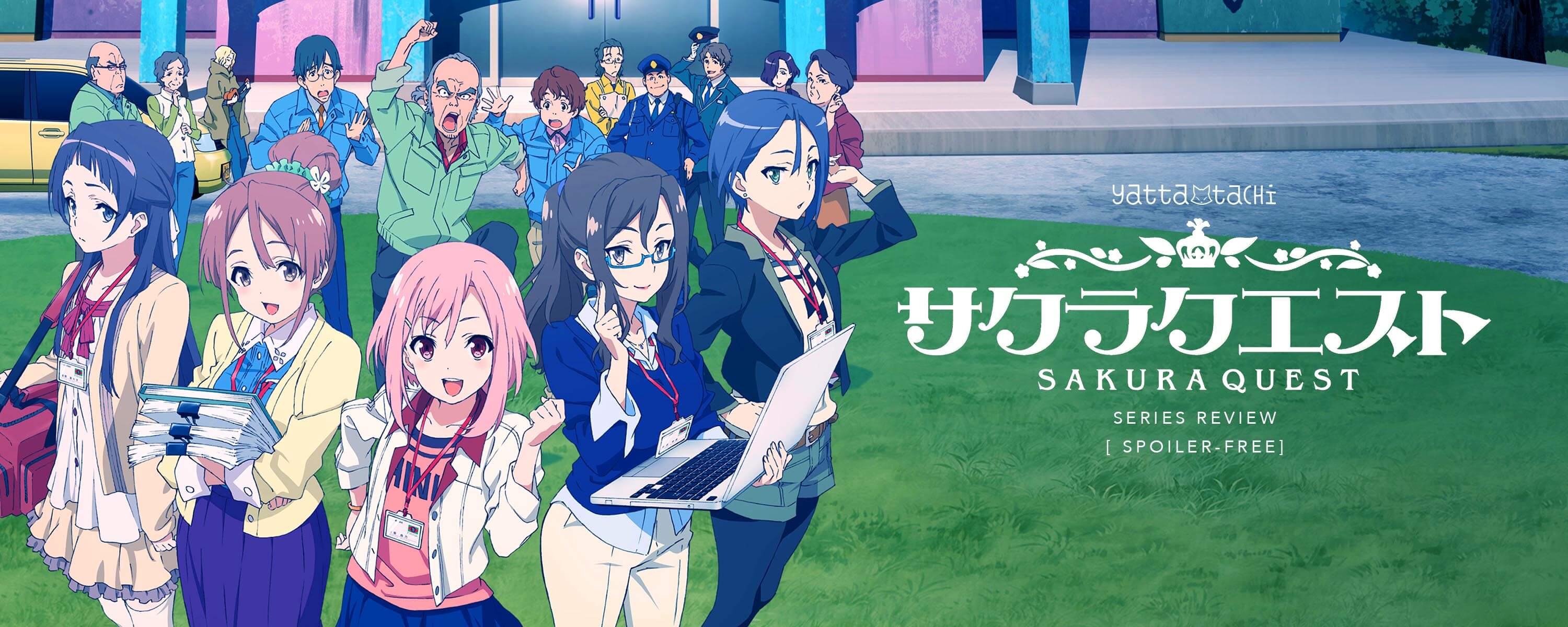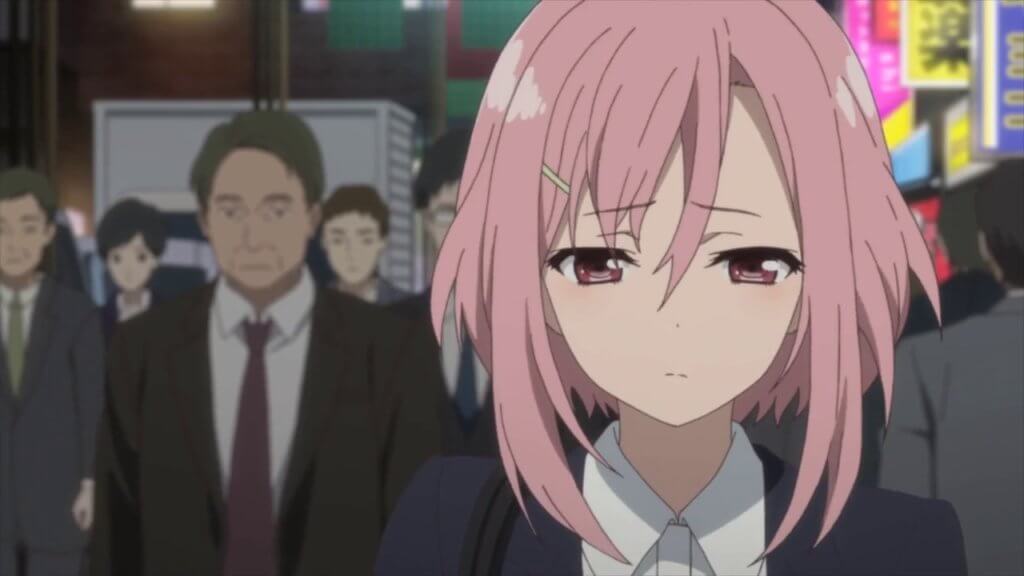
Story
The series begins with Yoshino Koharu, who is a recent college graduate. Rejected from another job interview, she ends up taking an offer to work in the small agricultural town of Manoyama. She is reluctant at first, to the point of trying to escape and not be stuck in the boonies under a year-long contract. She joins a campaign by the Tourism Board to revitalize the town by becoming the town’s “Queen,” their version of a tourism ambassador. Gathering four others, her team must rejuvenate the town while navigating through rural politics and rallying the citizens to act.
The premise of the show is enjoyable because I’m a sucker for anime in rural settings, and it’s also part of the “Working Life” series by P.A. Works, which deal with unique work environments. For those familiar with the “Working Life” series, you’re in for another solid show in a unique setting with a cast of well-developed characters. The story is told as the girls tackle a variety of issues to revitalize the town, including reviving the economy by increasing tourism and garnering interest in the town’s traditional festivals and wood crafts. The story tackles each specific issue before moving on, making it feel like there’s always something new happening, and the events are relevant to progressing the story and character development. However, it never revisits previous projects or ties everything together for the audience.
Overall, the show has a lighthearted story that tells the efforts of a group of people trying to revitalize a town. Yoshino assembles a main team that needs to address the tourism and economic issues facing Manoyama while maintaining the town’s cultural heritage. Similar to real life, sometimes their efforts pay off while the difficulty of other projects showcase the difficulties of rural politics and lifestyles. By the end of the series, however, there is a clear change in Manoyama’s mindset. The conflict does not feel unnecessary and works to further the development of the characters. There are amusing moments, but the comedy often falls flat. It drags on a little towards the end, but the conclusion is solid and shows the change in the town and characters that it initially set out to portray.
Characters
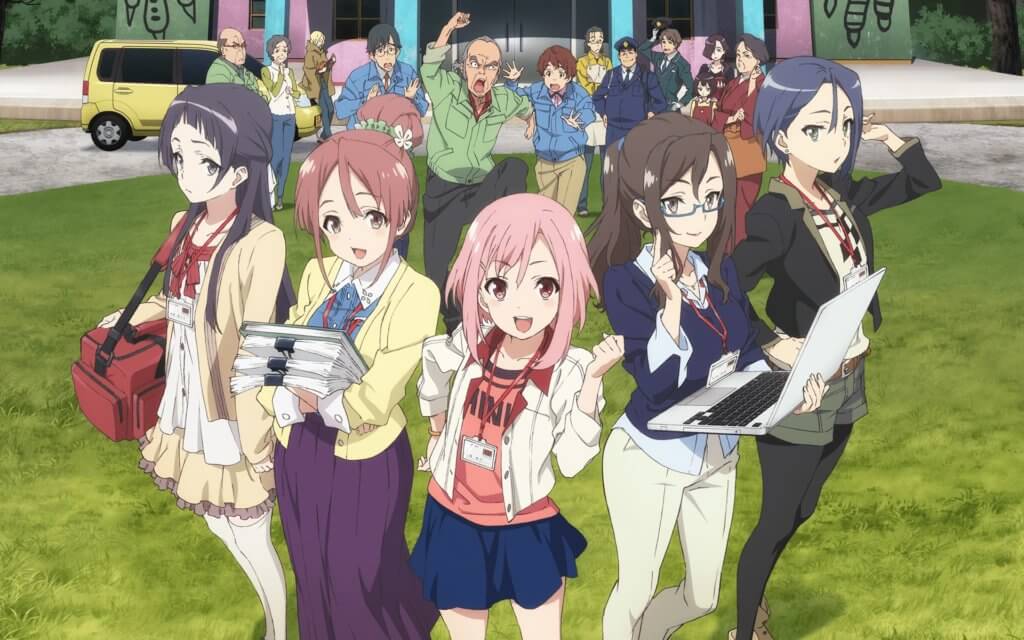
The show revolves around a core group of five girls: Yoshino, Shiori, Maki, Sanae, and Ririko. Yoshino is the eternally cheerful main character who relentlessly works to solve the town’s problems and rallies the people around her into action. Sanae, like Yoshino, is an outsider of Manoyama and has an air of urban practicality in her personality and way of thinking. Maki acts like the cool older sister and voice of reason for the younger characters. Shiori is a very positive person who works with everyone to better her hometown. Lastly, Ririko is a quiet person who hates her hometown and does not have the courage to leave, but gets convinced to join Yoshino’s team.
As a group, they have a strong dynamic, as they support each other’s ideas and efforts. However, they shine even more as individuals in how relatable they are. Since all of them have well-developed backgrounds, motivations, and issues, I was able to see different aspects of myself in each of the characters. Even the supporting cast feels realistic as they all have different, but easily relatable, motivations for helping (or not) with the projects developed by the Tourism Board. Sakura Quest conveys the message that life can take people on different paths, showing the characters encountering a wide range of issues, while also having them deal with the problems in realistic ways.
Animation and Music
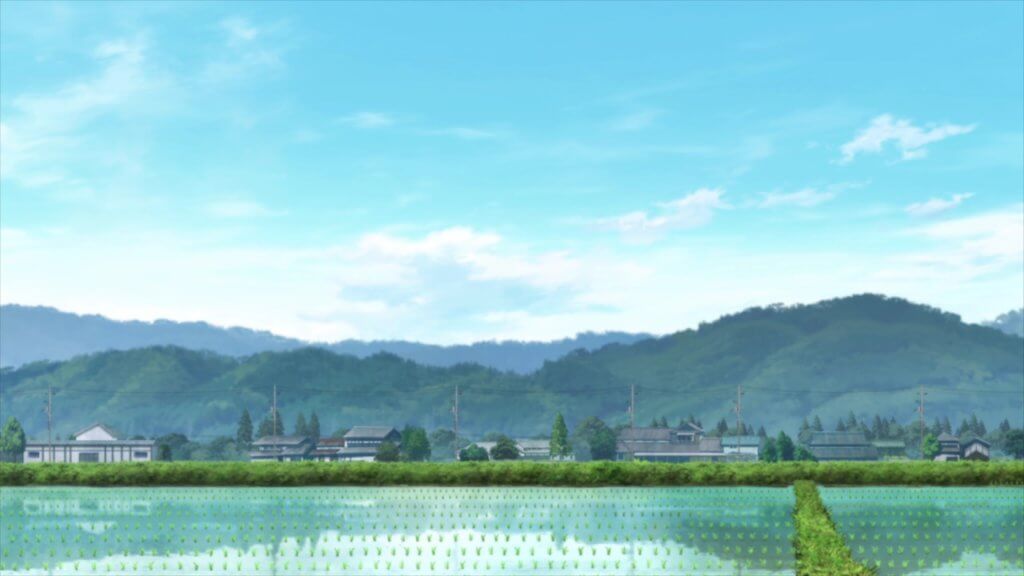
The animation for Sakura Quest is very polished and smooth, being very similar to Shirobako, the studio’s previous installation for the “Working Life” series. The designs and vibrant color scheme are archetypical from P.A. Works and draw the audience in. Even though there aren’t many flashy scenes, the show still thrives from its simple portrayal of nature and how unique each character is.
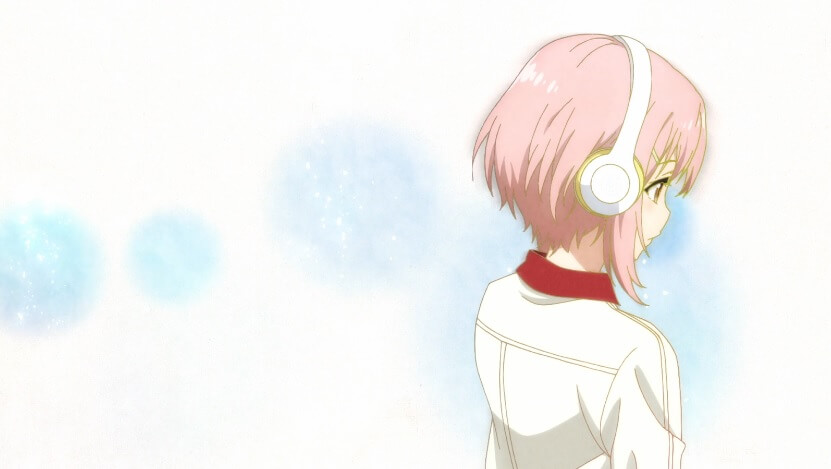
The soundtrack for the anime didn’t stand out compared to Hanasaku Iroha, the first installation of the “Working Life” series. Instead, it focused on meshing well with the animation to draw the viewer in and conveyed the simplicity of the show. The first ending song, “Freesia” by (K)NoW_NAME, was both wistful and hopeful, which perfectly captured the tone of the show. What really caught my attention was how the end of an episode always transitioned into this ending song so well.
Final Thoughts
Overall, Sakura Quest is an enjoyable show for fans of the slice-of-life genre, even if it has gone under the radar. There is a solid story that is supported by a cast of strong and well-developed characters, to the point that they feel like real people. This may not be the show to pick up if you’re expecting a fast-paced plot. I highly recommend Sakura Quest as a show that tells a story about preserving tradition, a slower way of life, and self-discovery. You can take your journey one step at a time, as all episodes are now available for free on Crunchyroll, or simply read more about it at Anime Planet.
The Good
- Well-developed characters with unique designs
- (Almost) Painful realism
- Beauty in simplicity
The Bad
- Weak comedy compared to other shows in “Working Life” series
- Pacing can be slow at times

Featured Sponsor - JAST
The sweetest romance and the darkest corruption, the biggest titles and the indie darlings; for visual novels and eroge, there's nowhere better.
Big thank you to our supporters
From their continous support, we are able to pay our team for their time and hard work on the site.
We have a Thank-You page dedicated to those who help us continue the work that we’ve been doing.
See our thank you page